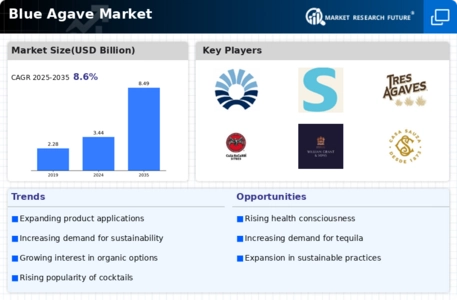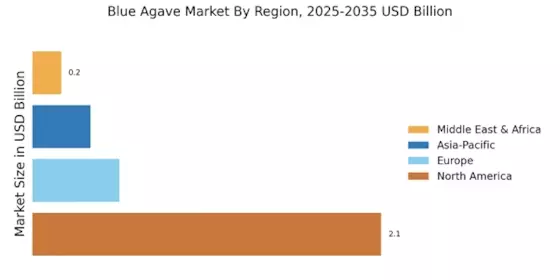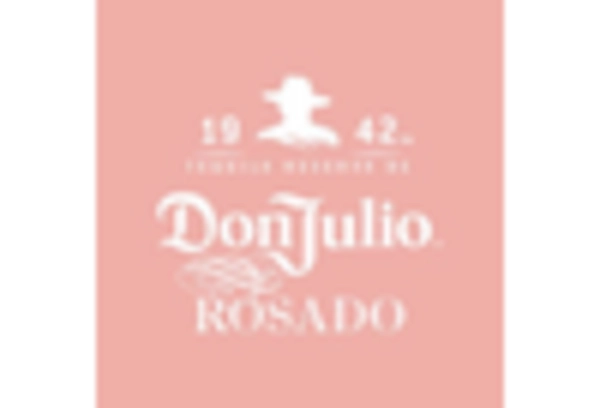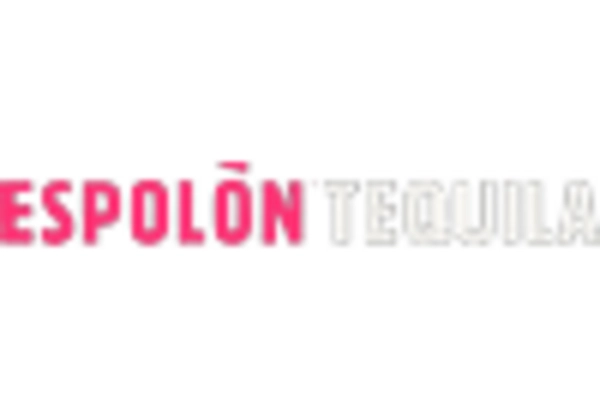Expansion of the Beverage Sector
The expansion of the beverage sector, particularly in the alcoholic beverage category, is a crucial driver for the Blue Agave Market. The rising popularity of tequila and mezcal, both derived from the blue agave plant, has led to increased demand for agave products. Recent market analyses indicate that the tequila segment alone is projected to grow at a rate of 7% annually, driven by consumer interest in premium and artisanal spirits. This trend is further supported by the growing cocktail culture, where agave-based spirits are increasingly featured in innovative drink recipes. The Blue Agave Market is likely to benefit from this trend as more consumers explore diverse agave-based beverages. Additionally, the craft cocktail movement has spurred interest in unique agave flavors, potentially leading to new product innovations and market opportunities.
Rising Demand for Natural Sweeteners
The growing preference for natural sweeteners over artificial alternatives is significantly influencing the Blue Agave Market. As health-conscious consumers seek to reduce their intake of refined sugars, agave syrup, known for its low glycemic index, is gaining traction. This trend is reflected in market data indicating that the demand for agave-based sweeteners has surged, with projections estimating a compound annual growth rate of approximately 8% over the next five years. The versatility of agave syrup in various culinary applications, from beverages to baked goods, further enhances its appeal. Additionally, the Blue Agave Market is benefiting from the increasing incorporation of agave products in health foods and beverages, as manufacturers respond to consumer preferences for clean-label ingredients. This shift towards natural sweeteners not only supports the growth of the agave market but also aligns with broader trends in the food and beverage sector.
Culinary Trends and Gourmet Applications
Culinary trends emphasizing gourmet and artisanal products are significantly impacting the Blue Agave Market. Chefs and food enthusiasts are increasingly incorporating agave syrup and other agave derivatives into their recipes, recognizing their unique flavor profiles and health benefits. This trend is evident in the rise of gourmet food products that feature agave as a key ingredient, appealing to consumers seeking high-quality, flavorful options. Market data suggests that the gourmet food segment is expanding, with a notable increase in the use of agave in sauces, dressings, and desserts. The Blue Agave Market is likely to see continued growth as culinary professionals experiment with agave in innovative ways, potentially leading to new product lines and collaborations. This focus on gourmet applications not only enhances the visibility of agave products but also positions them as premium offerings in the food market.
Increased Investment in Agave Cultivation
The Blue Agave Market is experiencing a surge in investment aimed at enhancing agave cultivation practices. As demand for agave products continues to rise, stakeholders are recognizing the need for sustainable farming techniques to ensure long-term supply. Recent reports indicate that investments in agave farming have increased by approximately 15% over the past year, driven by both private and public sector initiatives. These investments are likely to focus on improving agricultural practices, increasing yield, and ensuring the quality of agave plants. Furthermore, the Blue Agave Market may benefit from advancements in technology that facilitate better crop management and disease resistance. This influx of investment not only supports the sustainability of agave production but also positions the industry to meet the growing global demand for agave-based products.
Sustainability and Environmental Awareness
The increasing emphasis on sustainability and environmental responsibility appears to be a pivotal driver in the Blue Agave Market. Consumers are becoming more discerning, favoring products that are sourced sustainably. This trend is particularly relevant as agave cultivation is often viewed as environmentally friendly due to its low water requirements and ability to thrive in arid conditions. As a result, brands that emphasize sustainable practices in their production processes may experience enhanced consumer loyalty. Furthermore, the Blue Agave Market is witnessing a rise in certifications related to organic and sustainable farming, which could potentially attract a broader customer base. The market for organic agave products has shown a notable increase, with estimates suggesting a growth rate of around 10% annually. This shift towards sustainability not only aligns with consumer values but also positions the industry favorably in a competitive landscape.


















Leave a Comment